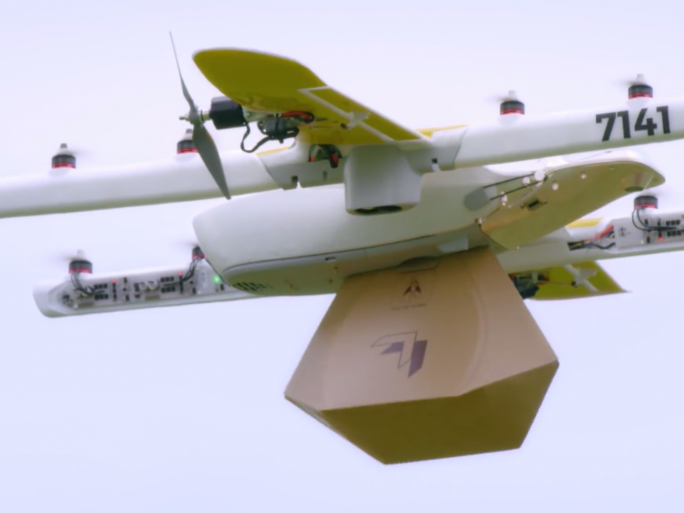Alphabet’s drone division Wing has confirmed the start of commercial drone deliveries in a major metropolitan area of the United States this week.
The drone delivery service will begin on Thursday 7th April, with Wing’s drones carrying out deliveries to “tens of thousands” of homes in the suburban towns of Frisco and Little Elm, both of which are part of the Dallas-Fort Worth metro area, the firm said in a blog post.
It comes after Wing last October announced it had partnered with US pharmacy chain Walgreens, to test Wing’s drones to fulfill deliveries from a store in Texas.
![]()
Texas drones
Until that time, Wing has been mostly delivering items in parts of Australia, and later Finland, and in smaller US towns, where land usage is less crowded and complex.
Wing’s drones typically deliver items such as takeaway food, coffee and medicines to various homes.
Last September Wing had to temporarily pause its drone delivery service in Australia’s capital city of Canberra, after ‘territorial’ ravens were seen attacking the delivery drones.
But now Wing has announced that a major metropolitan area in the US will be covered in its drone delivery service.
“Hi there – I wanted to personally share the good news with you all: Wing is finally set to launch the first ever commercial drone delivery service in a major U.S. metropolitan area in just three days, on Thursday, April 7,” wrote Wing CEO Adam Woodworth.
“We’re going to be starting small in the Dallas-Fort Worth Metroplex, with service to tens of thousands of suburban homes in the City of Frisco and Town of Little Elm,” said Woodworth. “We’ve staged drones at a local Walgreens store, so they’re ready to fly health and wellness products directly to customer homes.”
Ice cream deliveries
In addition to Walgreens, Wing will be delivering items after teaming up with three new partners in Frisco and Little Elm. This includes delivering ice cream from Blue Bell Creameries; prescription pet medications from easyvet; and first aid kits from Texas Health.
“This is an important milestone for Wing and drone delivery in the US,” said Woodworth. “It simply would not have been possible without the support of the public officials and the citizens of Frisco and Little Elm, and our merchant partners.”
Woodworth said that not everyone who lives within range of Wing’s drones will be able to order on Day 1.
Instead the firm is going to invite customers in groups “to make sure everyone has a good first experience with drone delivery.”
Wing’s drones can operate as both fixed-wing aircraft and hovering copters.
Wing’s drones don’t need to land to drop off goods. Instead Wing’s drone flies to the destination, descends to a height of 23 feet (seven meters), and then lowers the delivery package via a tether onto the ground.
Delivery future?
Drone usage has been touted for years as the future of good deliveries, but strict aviation rules (especially in the US), coupled with local concerns about noise and privacy, have dented the rollout pace of this technology.
Another factor is that many drones can only carry a payload of up to 3 kilograms, meaning that drone deliveries are unlikely to stop people’s having to visit their local supermarket for their weekly grocery food shop.
Amazon in previous years has been been a big champion of drone deliveries, with other firms such as Uber also exploring the technology.
But Amazon has seemingly cooled its enthusiasm for drone deliveries of late.
In late 2020 it laid off dozens of R&D and manufacturing staff working on its delivery drone service Amazon Prime Air.




